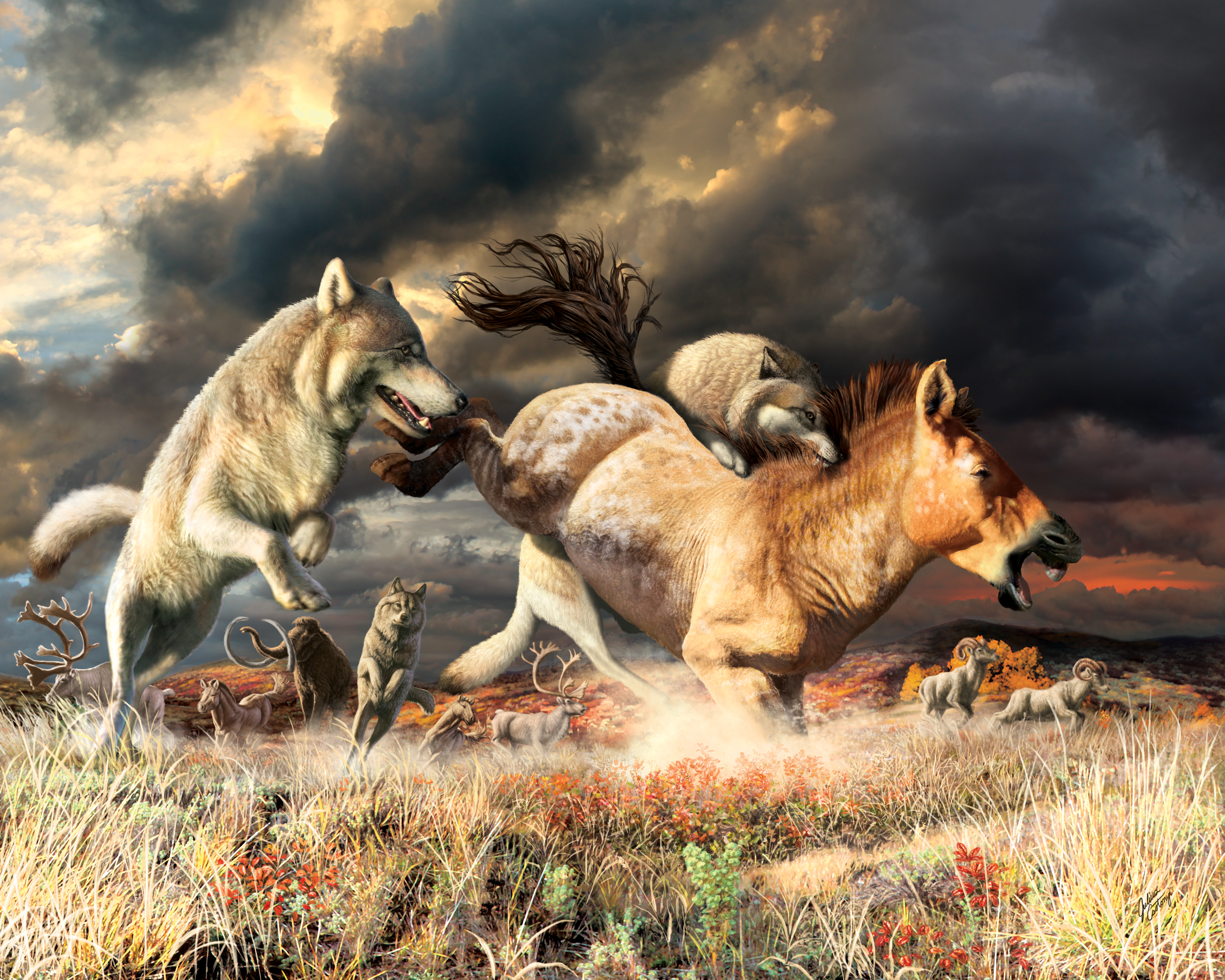Changing Diets Helped Grey Wolves Survive Pleistocene Extinctions

Grey wolves pursuing a horse on the Yukon mammoth steppe during the late Pleistocene. Painting by Julius Csotonyi for the Government of Yukon.
Grey wolves (Canis lupus) are one of the most widespread terrestrial carnivores and one of the largest to have survived the late Pleistocene extinctions. A new paper I’m a coauthor on shows that wolves from the Canadian Yukon were able to survive the extinctions in part because of their flexible diets.
Lead author Zoey Landry at the Canadian Museum of Nature shows that Pleistocene wolves were horse specialists but also ate muskox, reindeer, mammoth, and wild sheep. Since horses and mammoths went extinct in North America at the end of the Pleistocene, modern wolves in the area shifted to focusing on cervids (moose, and reindeer) as well as smaller mammals like beavers and rabbits. Read the press release here the article over at Palaeogeography, Palaeoclimatology, Palaeoecology.